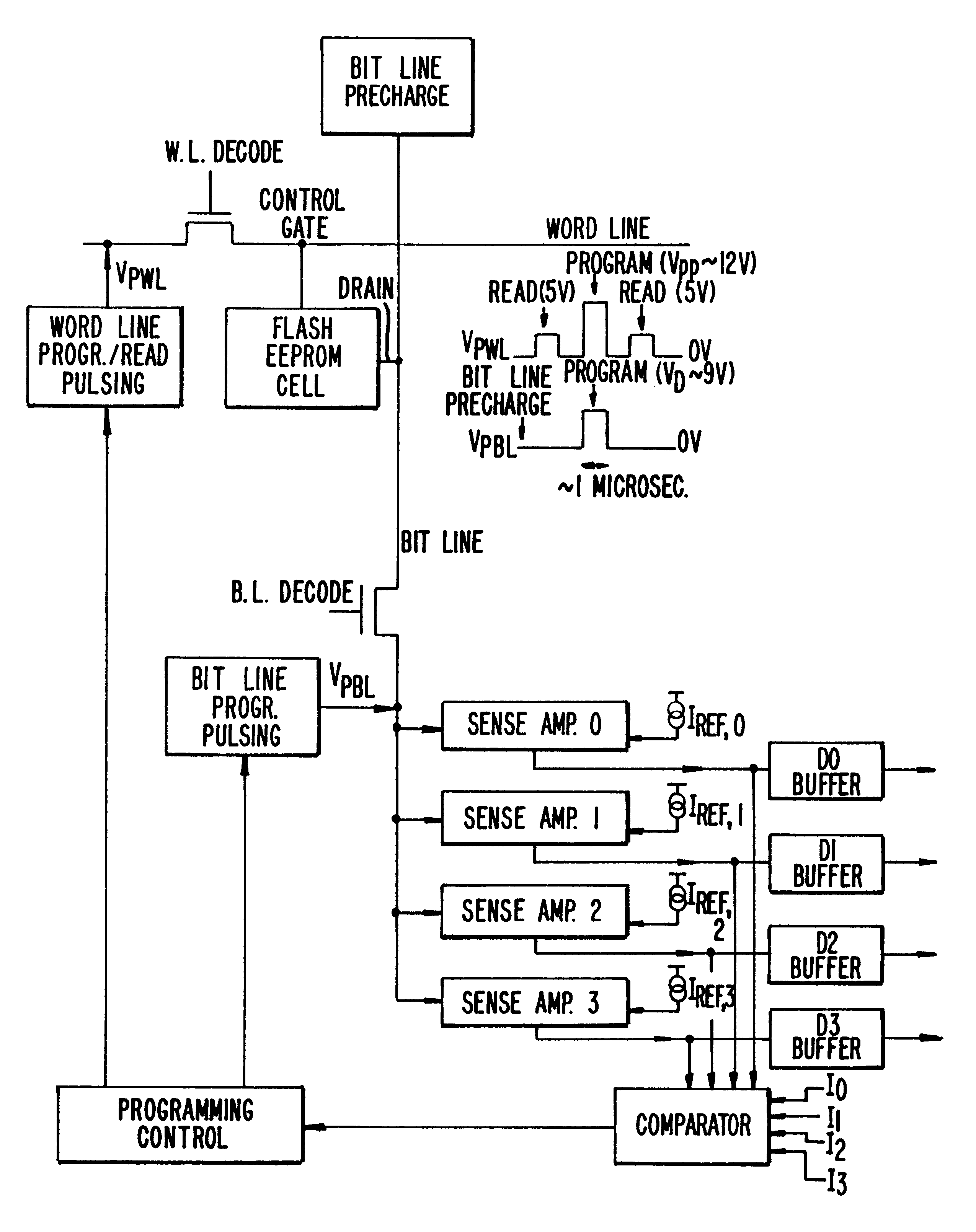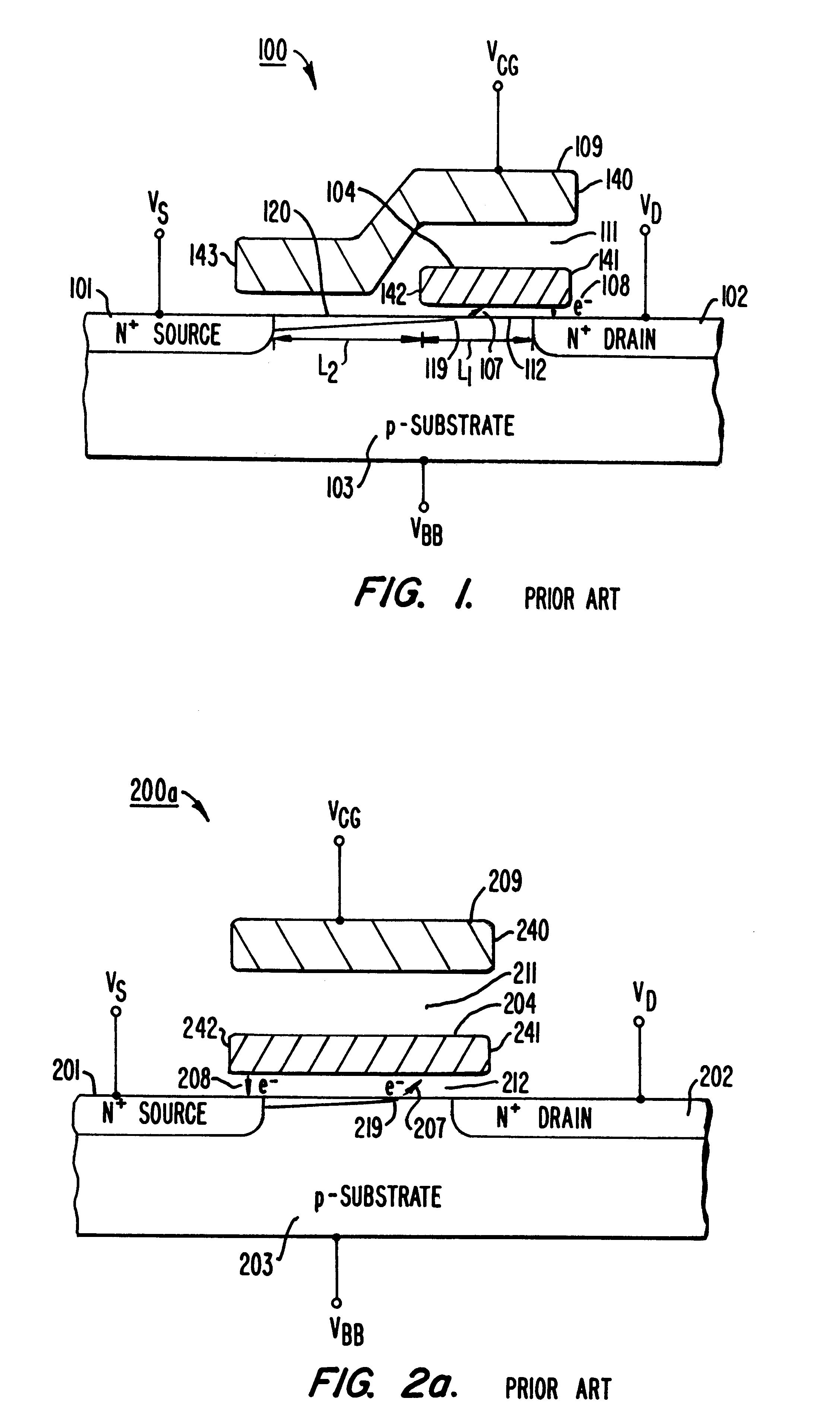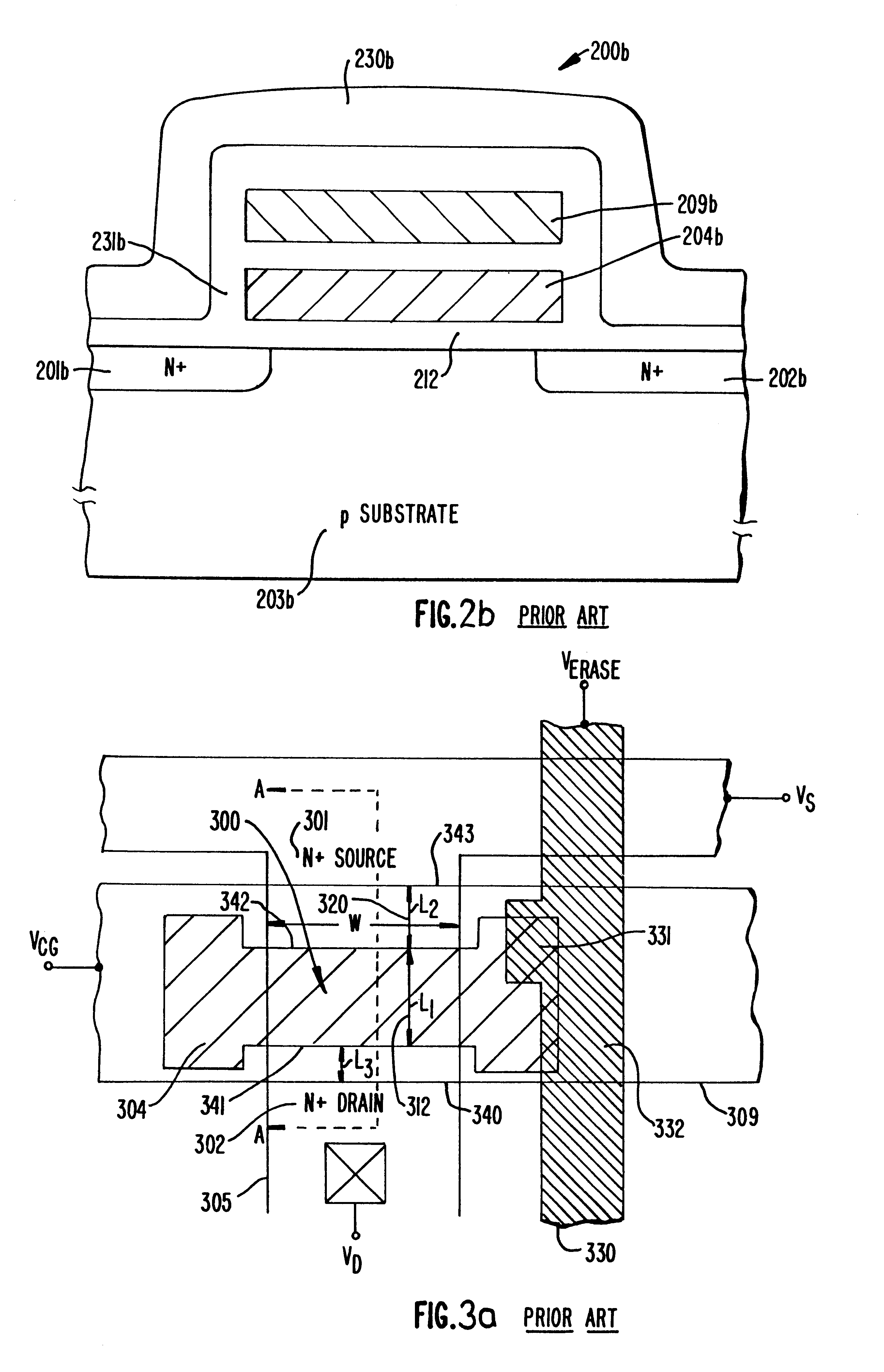Highly compact EPROM and flash EEPROM devices
a high-compact, flash-type technology, applied in the direction of digital storage, instruments, transistors, etc., can solve the problems of difficult to prevent accidental tunneling, kynett's cell is more susceptible to low yield, and is far more susceptible to accidental "program disturb"
- Summary
- Abstract
- Description
- Claims
- Application Information
AI Technical Summary
Problems solved by technology
Method used
Image
Examples
first embodiment
FIG. 5a presents a cross sectional view of a split channel Eprom transistor in accordance with this invention. Transistor 500a consists of a p type silicon substrate 563 (which can alternatively be a p type epitaxial layer grown on top of a p++ doped silicon substrate), N+ source diffusion 501a, N+ drain diffusion 502a, a channel region 560a which is more heavily p-doped than the surrounding substrate, a floating gate 504a overlying a portion L1 of the channel, 512a, and a control gate 509 overlying the remaining portion L2 of the channel, 520a as well as the floating gate. Floating gate 504a is dielectrically isolated from the surface of the silicon substrate by dielectric film 564a, which is thermally grown Silicon Dioxide. Control gate 509 is capacitively coupled to floating gate 504a through dielectric film 567a, which can either be thermally grown Silicon Dioxide or a combination of thin layers of Silicon Dioxide and Silicon Nitride. Control gate 509 is also insulated from the ...
second embodiment
FIG. 14c presents a cross sectional view of a non self aligned split channel Eprom transistor in accordance with this invention. FIGS. 14a and 14b illustrate the critical process steps in the manufacturing process of this device. Transistor 1400 consists of a p type silicon substrate 1463 (which can also be a p type epitaxial layer grown on a p++ substrate). Shallow N+ source diffusions 1401 and N+ drain diffusions 1402 are formed prior to formation of floating gate 1404, in contrast with the embodiment of section Ia above. The channel region between the source and drain diffusions is split into two portions: a portion L1 (1412) which is lying directly underneath the floating gate, and a portion L2 (1420) which is lying directly underneath the control gate 1409. The improvement over the Harari prior art split channel transistor 300d (FIG. 3d) consists of a heavily p+ doped narrow region 1460 adjacent to drain diffusion 1402. The width Lp (1413) and doping concentration of this regio...
third embodiment
Another embodiment of the self aligned split channel Flash EEprom of this invention can result in a cell which has smaller area than cells 600a and 700a of the embodiments described in Sections II and III respectively. In this third embodiment the area for tunnel erase between the floating gate and the erase gate is confined essentially to the surfaces of the vertical sidewalls along the two edges of each floating gate. To best understand how cell 800a of this embodiment differs from cell 700a a 2.times.3. array. of cells 800a, 800b, 800c and 800d are shown in FIG. 8a in topological view and in FIG. 8b along the same cross section direction AA as is the case in FIG. 7b for cells 700a, 700c.
Cell 800a has a floating gate 804a formed in a first layer of heavily N+ doped polysilicon. This gate controls the transistor conduction in channel portion L1 (FIG. 8a) through gate oxide insulation film 864. Control gate 809 is formed in the second conductive layer, and is insulated from the floa...
PUM
 Login to View More
Login to View More Abstract
Description
Claims
Application Information
 Login to View More
Login to View More - R&D
- Intellectual Property
- Life Sciences
- Materials
- Tech Scout
- Unparalleled Data Quality
- Higher Quality Content
- 60% Fewer Hallucinations
Browse by: Latest US Patents, China's latest patents, Technical Efficacy Thesaurus, Application Domain, Technology Topic, Popular Technical Reports.
© 2025 PatSnap. All rights reserved.Legal|Privacy policy|Modern Slavery Act Transparency Statement|Sitemap|About US| Contact US: help@patsnap.com



